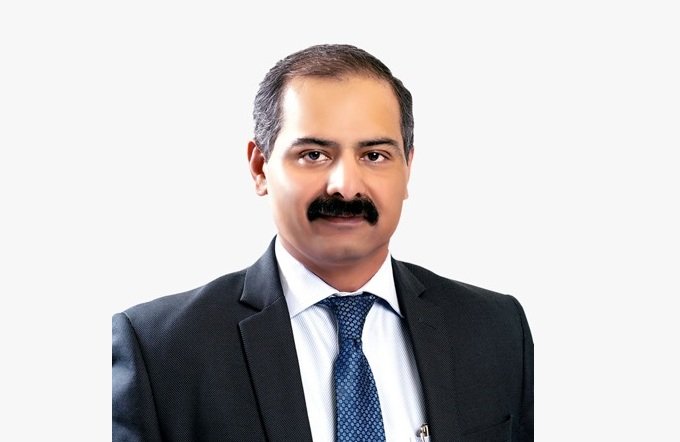With Strong EPR Enforcement, Recycling Projects Can Deliver IRRs Above 15%: Re Sustainability's Masood Mallick
Mallick, Chairman, CII National Committee On Waste to Worth Technologies 2025, CEO & MD, Re Sustainability, shares how India’s recycling ecosystem is changing from policy to practice, and from niche players to industry-wide participation

From the first edition of India’s National Circular Economy Framework (NCEF) to its expanded third version launched this year; Masood Mallick, Chairman, CII National Committee on Waste to Worth Technologies 2025, CEO & MD, Re Sustainability, has witnessed the country’s circularity journey evolve from concept to implementation. In an interview with ResponsibleUs, he shares how India’s recycling ecosystem is changing from policy to practice, and from niche players to industry-wide participation.
Excerpts:
The first edition of the National Circular Economy Framework in 2023 covered only four materials. How has it evolved to twenty materials in the third edition?
The first edition covered just four materials. The third edition today covers twenty priority materials. In addition to focusing on understanding the current state of recycling and resource recovery, it also defines updated goals and metrics for what our recycling targets should be, keeping in mind both India’s economic and environmental priorities. It identifies an action plan with the stakeholders responsible. If you look at the new framework, you will see that every material section now ends with a specific action plan — six key steps, who can do them, and how the goals can be achieved.
Earlier, the focus was mostly on policy changes. Now, it has shifted to implementation. What began as a concept in the first edition became a detailed policy document in the second, and today it has become an implementation guide with specific industry, R&D, market, and enforcement actions for each of the twenty materials.
Many investors hesitate to enter recycling because returns are uncertain. What would you say about the economic potential of a recycling unit?
The economics of each project are different; they depend on the segment. Let’s understand this with two simple industry examples, as recycling electrical waste is not the same as recycling building debris. The demand for aggregates, sand, or bricks determines the economics of construction detritus. In e-waste, the recovery of gold, silver, or palladium defines viability.
The second factor is location —how close you are to the feedstock, or what we earlier called “waste.” Feedstock cost is the single largest determinant of a project’s success. For a ₹100 crore project, the first thing is to check if schemes exist to bring down capital cost through subsidies. Now, there are programmes like the government’s Critical Minerals Programme that subsidise a significant part of capital costs because recycling is being recognised as strategically important.
Earlier, the focus was only on economics and the environment. Today, we have economics, environment, and resource security — the strategic long-term interests of the country. There are also opportunities to optimise operational costs with Extended Producer Responsibility (EPR) revenue. In sectors where EPR enforcement has begun, recycling projects can generate IRRs above 15%. In others, where enforcement is still building, returns may be lower for now — but laws will only get stronger, not weaker.
So, any investment in recycling and resource recovery today may not give instant returns, but in the long run, it will offer more than 15% IRR.
What was the experience of moving from 4 materials to 20?
From 4 materials to 20 materials, I think it is a humongous journey because it meant that we had to work across all the industries. We started with materials we already understood; we worked on that because that was easy. But the moment new materials started coming in, we realised that our expertise is limited, and we needed to seek out exports and enter new industries or new sectors to understand each material — its recycling potential, economics, technology gaps, and policy barriers.
This entire process has been a great learning experience over the past three years. Through CII, the environmental professionals who volunteered have now become thought leaders, having gained a complete 360-degree understanding of circularity.
How has industry participation changed in the last year?
Earlier, only recyclers were part of the conversation. Over the past year, we added around 50 new members to the National Committee, representing India’s largest conglomerates in chemicals, infrastructure, metals, mining, and consumer goods. Mainstream manufacturing companies are now becoming recyclers themselves. In my own organisation, we’ve formed at least half a dozen new joint ventures with major players in the past 12 months.
This is what I call the mainstreaming of circularity. When a large industry leader begins recycling, it changes the game. It means recycling is happening at scale, and that gives us confidence that this sector’s time has truly come.
Roughly how much material does Re Sustainability recycle today?
We have crossed 10 million tonnes of processing across around 10 different feedstock types.
Do you think there should be a policy for feedstock pricing?
When something is considered waste, people pay to get rid of it. But the moment it gains value, they want a share of it; that’s human nature. Instead of competing over prices, we should build ecosystems of partnership. In my view, this problem can be solved by creating cooperatives. Why? Let’s understand this with an example: if the feedstock comes from farmers, they could form cooperatives and become partners or even equity holders in recycling ventures. If they hold 20% equity in the plant, they share both the risks and the profits. That way, it’s no longer a zero-sum game; everyone wins.
Ever noticed developers and builders using recycled materials in the real estate sector?
There are two key reasons. First, cost. In many parts of India, recycled sand and aggregates are now cheaper than virgin materials because illegal sand mining and quarrying have been curbed by enforcement from the NGT. Once those illegal sources dried up, recycled materials became the affordable, legal, and sustainable alternative.
Second, perception. Earlier, real-estate developers believed recycled material was only for non-structural use. But when we built a multi-storey structure using 100% recycled materials — metals, aggregates, everything — it proved that quality and durability can match virgin materials, provided processing and quality control are strong.
Now, developers are using recycled materials even for structural applications.
COP30 is approaching. Participation is going down, dropping compared to earlier COPs. Why do you think the number is decreasing?
Logistics is one big reason. Reaching that part of the world takes 27 hours. Connectivity is a real issue.
Secondly, earlier, there was a lot of what I call Instagram sustainability, people attending just for visibility, not substance. With current global and economic challenges, only serious players are willing to travel that far.
So, we, will see fewer attendees but more meaningful participation.
Last year, COP discussions focused heavily on sustainable finance. How do you see that progressing this year?
There’s conversation fatigue. Where there are no tangible and measurable results, discussions lose their meaning. It is for this reason that frameworks like NCEF become so important; they make conversations real and trackable.
The biggest obstacle today is the absence of a globally agreed carbon pricing. Carbon has become the new “currency” of sustainability, but without a clear mechanism, finance can’t flow effectively. If we can agree on a global carbon economy even today, it’s not too late. That single step would unlock huge amounts of sustainable finance waiting to be deployed.
For example, we currently invest ₹1,200 crore each year in recycling. With the right carbon price, we could invest five times more, ₹6,000–7,000 crore annually. Imagine the impact across the entire industry.
The opportunity is enormous. All we need is agreement and action.
What's Your Reaction?

















